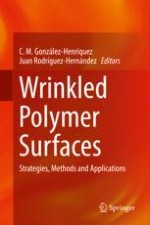2019 | OriginalPaper | Chapter
8. Micro- and Nano-patterned Hydrogels Fabricated by Taking Advantage of Surface Instabilities
Authors : C. M. González-Henríquez, M. A. Sarabia Vallejos, Juan Rodríguez-Hernández
Published in: Wrinkled Polymer Surfaces
Publisher: Springer International Publishing
Activate our intelligent search to find suitable subject content or patents.
Select sections of text to find matching patents with Artificial Intelligence. powered by
Select sections of text to find additional relevant content using AI-assisted search. powered by
